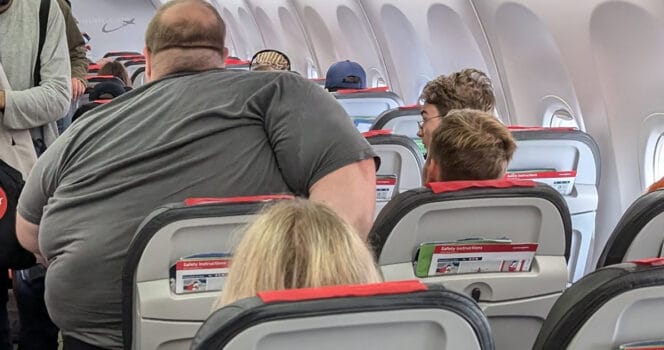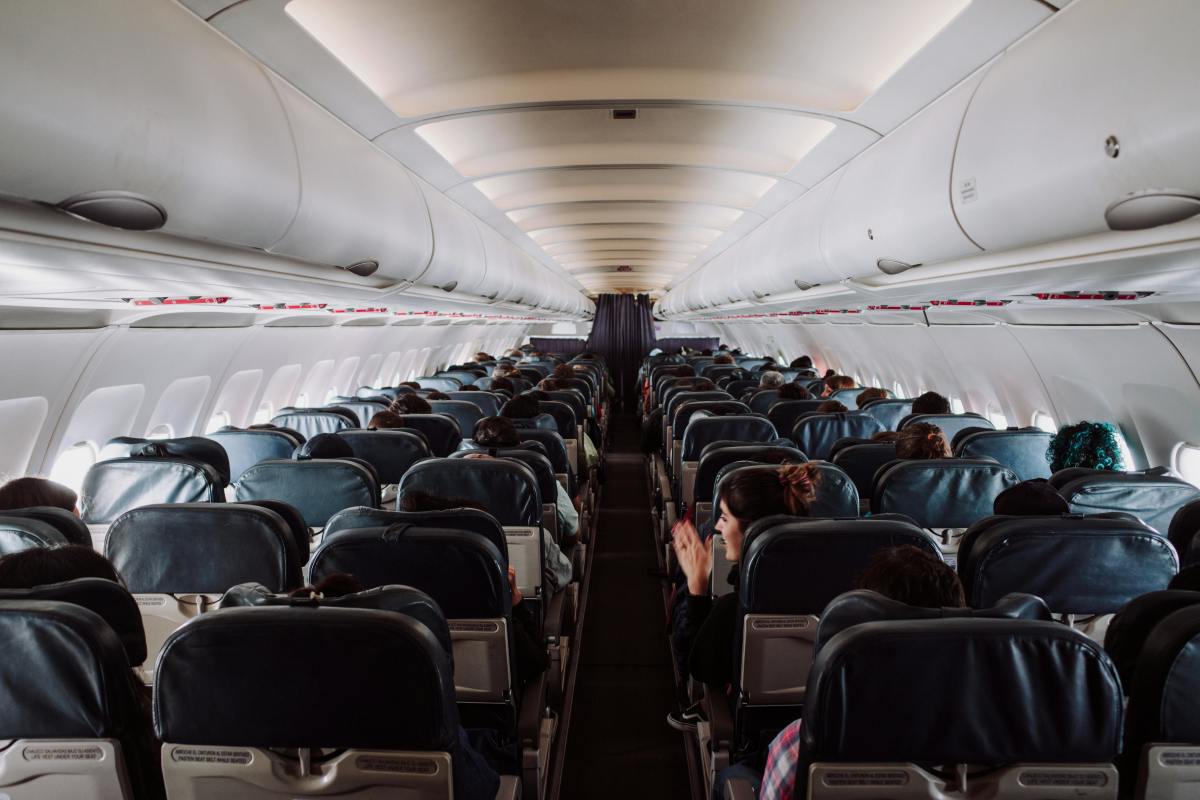A recent photo shared online has reignited public discussion about airline seating policies, body inclusivity, and the evolving expectations around passenger comfort. The image—capturing a visibly uncomfortable plus-sized passenger seated on a commercial flight—has gone viral, generating widespread attention across social media platforms.
Originally posted by consumer advocate Christopher Elliott in September 2024, the photo quickly gained traction after it was reshared by the music group Pretty Ricky, who called for greater awareness and changes in airline policies for passengers of all sizes.
Social Media Reacts to Airline Seating Challenges
The viral image was taken on a flight between Helsinki and Copenhagen and has since become a focal point in a larger conversation about the airline industry’s seat sizing standards.
Pretty Ricky, a hip-hop group known for their early 2000s hit “Grind with Me,” reposted the image on their Instagram account along with a caption urging airlines to create better accommodations for plus-sized passengers.
“Airlines will have to have something in place for plus-sized passengers. This image shows how difficult it is for people who are bigger than one seat,” the caption read.
“It’s also difficult for those sitting next to them. It’s a difficult situation because the airline will need to think of a happy medium.”
The post sparked thousands of comments within days, with opinions varying from support for passenger rights to suggestions for policy changes.

Diverse Views on Responsibility and Comfort
The viral conversation drew global reactions. While some commenters emphasized the need for inclusive design and compassion, others questioned how airlines should balance passenger comfort, space limitations, and ticket pricing.
A common viewpoint argued for flexible policies that ensure both plus-sized passengers and those seated nearby are comfortable.
Others raised concerns about shrinking airline seats, which affect passengers of all sizes. In recent years, several advocacy groups have called out airlines for reducing seat width and legroom to maximize capacity.
According to a report from FlyersRights.org, the average economy seat width in U.S. carriers has decreased from 18.5 inches in the 1990s to as little as 16 inches today. Legroom, or seat pitch, has also dropped from 34 inches to as little as 28 inches.
Source: FlyersRights.org – Airline Seat Sizes Shrinking
Accessibility and Passenger Rights Advocates Speak Out
Among those who joined the conversation was Jaelynn Chaney, a plus-size travel advocate and social media influencer. Chaney has gained attention for her efforts to promote inclusivity in travel and push for policy changes that accommodate passengers of all body types.
In a video shared on TikTok, Chaney said:
“Why should I have to shrink myself to fit into spaces never designed for me? The issue isn’t me—it’s the system.”
Chaney has proposed that airlines offer free additional seating for larger passengers when needed, framing it as a matter of accessibility and dignity. She has also advocated for a more inclusive travel experience through public petitions and policy proposals.
“Flying isn’t a luxury—it’s a necessity,” she said, responding to critics who suggested that plus-sized travelers should simply purchase first-class tickets.
Source: Jaelynn Chaney – Official Website and Advocacy
The Case for Inclusive Travel Policies
As this discussion continues, some advocates are calling for national legislation to ensure accessible travel for people of all sizes. One proposal that has gained attention is the concept of a “Travelers’ Bill of Rights”, which could include protections for plus-sized passengers, improved transparency in seating policies, and minimum seat dimensions.
While such measures are not yet law in the United States, groups like FlyersRights.org and the National Council on Disability (NCD) have encouraged federal agencies such as the U.S. Department of Transportation (DOT) to take action in regulating seating sizes and accessibility standards.
In 2022, the DOT invited public comment on airline seat dimensions and their impact on passenger safety and comfort. The request came after growing concerns about whether current seat configurations allow for proper evacuation during emergencies.
Source: U.S. DOT – Request for Comments on Airline Seat Size
Airline Industry Perspective
From the airlines’ standpoint, balancing passenger comfort with operational efficiency remains a challenge. The trend toward smaller seats has helped airlines reduce costs and increase profitability, especially in the low-cost carrier model.
However, some airlines have responded to criticism by introducing more flexible seating options. For example:
- Some carriers offer “extra space” seats at an additional cost.
- Others allow passengers to book adjacent seats at a discounted rate.
- Airlines like Southwest have a Customer of Size policy, which offers a complimentary additional seat to qualifying passengers who request it in advance.
Source: Southwest Airlines – Customer of Size Policy
These policies vary widely and are not always well-publicized, prompting calls for greater consistency and clarity across the industry.

Balancing Comfort, Privacy, and Policy
As online debate around the viral photo continues, experts urge a respectful and solution-focused dialogue. While personal opinions differ, most agree that the discussion highlights a broader issue: the need to ensure air travel is accessible and equitable for all passengers.
Dr. Courtney Stephens, a professor of aviation management, notes:
“Airlines must find a balance between financial sustainability and meeting the needs of a diverse passenger base. This includes individuals with different body sizes, disabilities, and other accessibility needs.”
Source: Journal of Air Transport Management – Accessibility and Airline Policy
Final Thoughts: Moving Toward Inclusive Air Travel
As air travel continues to be an essential part of modern life, the discussion around seat size and passenger comfort is not going away. The viral image served as a flashpoint, but the underlying issues have been building for years—shrinking seats, lack of clear policies, and varying levels of customer service.
Whether through regulation, innovation, or customer-driven reform, the conversation is likely to push airlines and policymakers toward a future where accessibility is prioritized, and all passengers can travel with comfort and dignity.
Verified Sources:
- FlyersRights.org – Shrinking Seat Sizes
- U.S. Department of Transportation – Public Comment on Airline Seats
- Southwest Airlines – Customer of Size Policy
- Jaelynn Chaney – Plus-Size Travel Advocacy
- Journal of Air Transport Management



